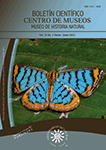Authors
Abstract
Agricultural organic waste can be taken advantage of if one takes into account that it is a reusable source of nutrients and energy, reason why processes such as composting can improve its quality through aerobic decomposition. In an organic material composting process from coffee farms located in the Department of Cundinamarca (coffee pulp, bananas, manure and bovine manure) populations of bacteria, Treponema, and fungi were qualitatively and quantitatively characterized. The characterization of microbial populations was carried out through the application of techniques of serial dilution in selective culture ways and microscopy and macroscopia techniques. Micro-organisms of greatest importance found in pure substrates and their mixes were: for bacteria, the genera Pseudomonas and Bacillus; for Treponema Streptomyces and fungi, Aspergillus and Penicillium.
Keywords
References
ADAMS, J. D. & FROSTICK, L. E., 2007. Investigating microbial activities in compost using mushroom (agaricus bisporus) cultivation an experimental system. Bioresource technology, 99: 1097-1102.
ADEGUNLOYE, D. V., ADETUYI, F. C., AKINYOSOYE, F. A. & DOYENI, M. O., 2007. Microbial Analysis of Compost Using Cowdung as Booster. Pakistan. Journal of Nutrition, 6 (5): 506-510.
AGUIRRE, E. & ULLOA, M., 1983. Primer registro en México sobre la sucesión de hongos en el estiércol de vaca. Bol. Soc. Mex. Mic., 76-88.
ARBEIT, R. D., ARTHUR, M., DUNN, R., KIM, C., SELANDER, R. K. & GOLDSTEIN, R., 2000. Resolution of recent evolutionary divergence among Escherichia coli from related lineages: The application of pulsed field electrophoresis to molecular epidemiology. J Infect Dis., 161: 230-235.
ARENAS, R., 2003. Medical Micology. McGraw Hill. México. 397 p.
ATLAS, R. & BARTTHA, L., 2005. Ecología microbiana y microbiología ambiental. Pearson Educación, S. A. Madrid. 677.
CALBRIX, R., BARRAY, S., CHABRERIE, O., FOURRIE, L. & LAVAL, K., 2007. Impact of organic amendments on the dynamics of soil microbial biomass and bacterial communities in cultivated land. Appl. Soil Ecol., 35: 511-522.
CASAS, G., 1989. Micología general. Ediciones de la Biblioteca. 488 p.
CASTRILLÓN, O., BEDOYA, O., MONTOYA, D. V., 2006. Effect of pH on the growth of microorganisms during the maturation stage in static compost piles. Producción + Limpia, 1 (2): 8-12.
ESTRADA, M. E. & PERALTA, J. R., 2001. Evaluación de dos tipos de fertilizantes orgánicos (gallinaza y estiércol vacuna) y un mineral en el crecimiento y rendimiento del cultivo de frijol común (Phaseolus vulgaris L.) variedad DOR-364, postrera: Tesis, Universidad Nacional Agraria, Facultad de Agronomía, Nicaragua. pp. 29-34.
FRANCO-CORREA, M., 1999. Aislamiento, Caracterización y Evaluación de Actinomycetes inhibidores de algunos hongos fitopatógenos: Tesis, Maestría en Microbiología, Instituto de Biotecnología, Universidad Nacional de Colombia. 86 p.
GOLUEKE, C. G., 1977. Biological reclamation of organic wastes. Rodale press, Emmaus, Pennsylvania, 249 p.
INSAM, H., RIDDECH, N. & KLAMMER, S., 2002. Microbiology of composting. Springer second edition. pp. 9-108.
KONEMAN, E. W., 2001. Diagnóstico Microbiológico: Texto y Atlas a Color. Quinta Edición. Médica Panamericana. Argentina. pp. 10-16.
LACEY, J., 1973. Actinomycetes in soils, composts and fodders: 231-251 (in) SYKES, G., SKINNER, F. A. (eds.) Actinomycetales: Characteristics and Practical Importance. Academic Press, London.
MACFADDIN, J. F., 2000. Biochemical tests for identification of medical bacteria. Lippincott. pp. 112-115.
MADIGAN, M., MARTINKO, J. M. & PARKER, J., 2000. Brock Biology of microorganisms. Ninth edition. prentice hall. pp. 861-866.
MÁRQUEZ, M., MARTÍNEZ, M. & FRANCO, M., 2003. Aislamiento de Trichoderma sp. y actinomycetes a partir de suelos de clavel (Dianthus caryophyllus) y evaluación de su capacidad antagónica in vitro sobre Fusarium oxysporum. Revista Agronomía Colombiana, XIX (1-2): 81-88.
MELÉNDEZ, G., 2003. Indicadores químicos de calidad de abonos orgánicos: 50-63 (en) Abonos orgánicos: principios, características e impacto en la agricultura. Costa Rica.
MORENO, J., MORAL, R., 2008. Compostaje. Ediciones Mundi-prensa. Madrid. pp. 78-85.
PÉREZ, A., CÉSPEDES, C. & NÚÑEZ, P., 2004. Caracterización física-química y biológica de enmiendas orgánicas aplicadas en la producción de cultivos en República Dominicana. R.C. Suelo Nutr. Veg., 2: 10-29.
PETERS, S., KOSCHINSKY, S., SCHWIEGER, F. & TEBBE, C. C., 2000. Succession of microbial communities during hot composting as detected by PCR-single-strand-conformation polymorphism-based genetic profiles of small-subunit rRNA genes. Applied and environmen. microbial, 66: 930-936.
PRESCOTT, L. M., 2002. Microbiology. Editorial McGraw-Hill. Boston, USA. pp. 524-528.
REBOLLIDO, R., MARTÍNEZ, J., AGUILERA, Y., MELCHOR, K., KOERNER, R. & STEGMANN, R., 2008. Microbial populations during composting process of organic fraction of municipal solid waste. Applied ecology and environmental research, 6 (3): 61-67.
RODRÍGUEZ, N., 1999. Manejo de residuos en la agroindustria cafetera. Seminario internacional, gestión integral de residuos sólidos y peligrosos, siglo XXI. Cenicafé. pp. 44-45.
SALAZAR, E., LÓPEZ, J. D., ZÚÑIGA, R., VÁZQUEZ, C., FÓRTIZ, M. & SILVA, J., 2004. Uso y aprovechamiento del estiércol como alternativa nutricional en invernadero. Bol. Soc. Mex., 44-48.
SYLVIA, D., FUHRMANN, J., HARTEL, P. & ZUBERER, D., 1999. Principles and applications of soil microbiology. Prentice Hall. Nueva York. pp. 89-92.
TOKALA, K., STRAP, C. & JUNG, D., 2002. Novel plant-microbe rhizosphere interaction involving Streptomyces lydicus WYEC108 and the pea plant (Pisum sativum). Applied and Environmental Microbiology, 68: 2161-2171.
VILLENA, G. & GUTIÉRREZ, M., 2003. Biopeliculas de Aspergillus niger para la producción de celulasas: algunos aspectos estructurales y fisiológicos. Revista peruana de Biología, 2: 12.
YAÑEZ, P., LEVY, A. & AZERO, A., 2007. Evaluación del compostaje de residuos de dos agroindustrias palmiteras del Trópico de Cochabamba en silos hiperventilados. Acta Nova, 3 (4): 20-24.

 PDF (Español)
PDF (Español)
 FLIP
FLIP


















